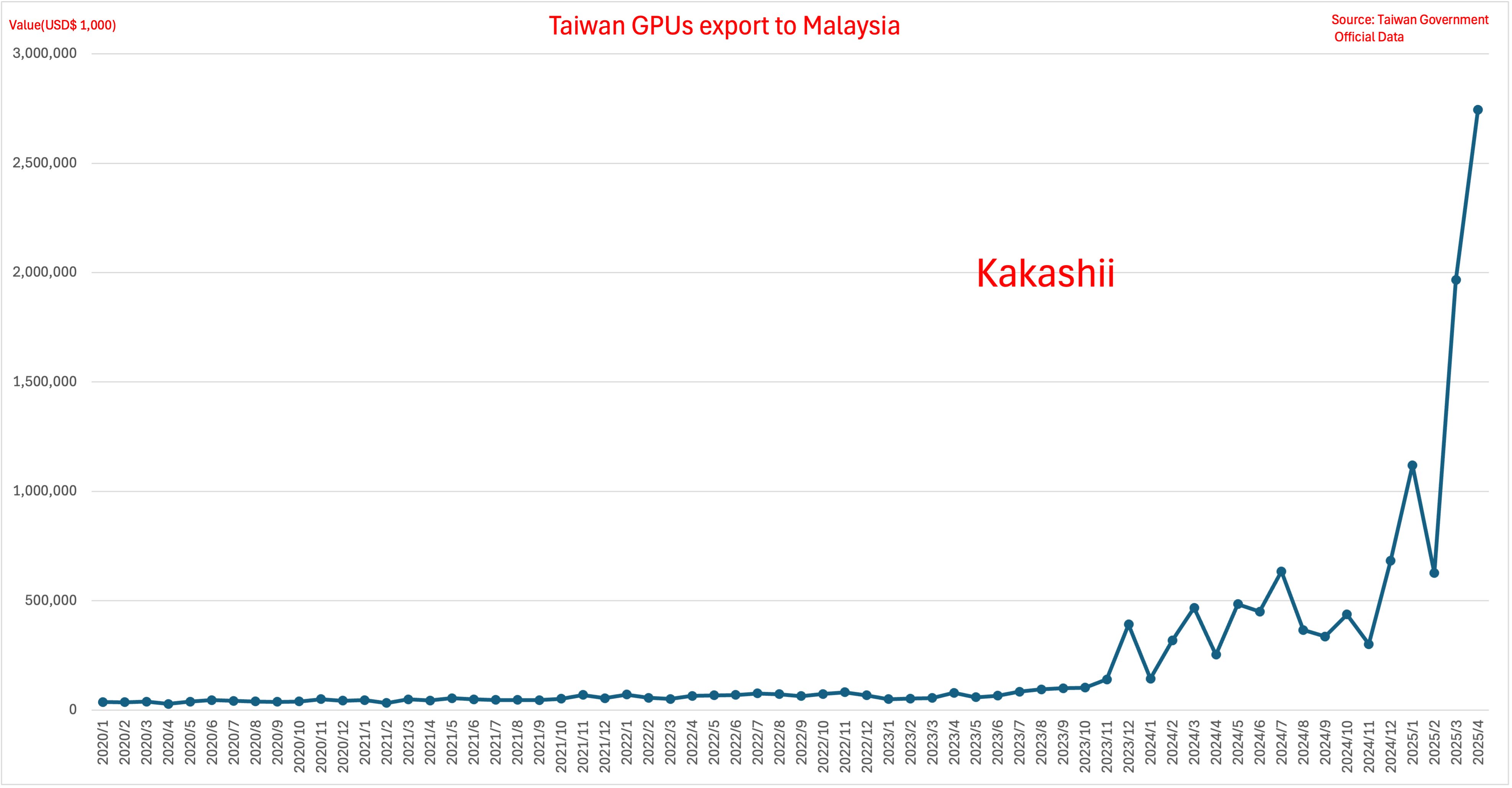Malaysia has reportedly recorded an unprecedented surge in GPU imports as per data shared by Taiwan’s International Trade Administration, highlighted in a post by X user @kakashiii111. Despite requests from the U.S. government for Malaysia to strengthen its monitoring of high-tech exports to China, the month of April saw imports of $2.74 billion in GPUs, a monumental 3,400% jump from 2023.
GPU imports in Malaysia have notably witnessed a sharp increase throughout the year. If we look at historical data, imports in the month of January 2025 totaled $1.12 billion, marking a 700% increase year-over-year. February followed with $627 million in shipments, which is slightly lower but still substantial. March saw a dramatic spike to $1.96 billion, a similar 3,400% increase as April, compared to the same month in 2023. Essentially, the country has roughly imported $6.45 billion worth of GPUs in just the first four months of 2025, surpassing the entire sales for 2024.

This potentially raises some concerns over the fact that certain buyers are rerouting Nvidia-branded GPUs to the Chinese market through Malaysia despite strict norms placed by the U.S. Last month, we reported a similar trend, with customs data showing Taiwan’s exports of computing systems to Malaysia skyrocketing in March to $1.87 billion which is a 366% year-over-year increase and an astonishing 55,117% surge compared to March 2023.
The massive surge in PC components, including GPUs and AI-accelerators, particularly from Nvidia, aligns with the U.S. government’s tighter restrictions on AI and HPC GPU shipments to China. This has naturally led to speculations that Malaysia is either stockpiling hardware for its own cloud AI ambitions or acting as a hub for Chinese buyers trying to bypass the recent sanctions. Notably, the AI Diffusion Rule is set to take effect on May 15, which could make Malaysia a backdoor for restricted tech despite recent efforts to crack down on smuggling rings.
As pointed out by Taiwanese media outlet TechNews, Nvidia may not reveal the actual volume of GPU shipments to Malaysia. This is due to a new reporting method that logs revenue based on the customer’s billing location, rather than the physical destination of the goods. This lack of disclosure does raise questions about transparency and could invite further scrutiny from U.S. regulators, especially amid tightening export controls to China and other Southeast Asian countries.
Follow Tom's Hardware on Google News to get our up-to-date news, analysis, and reviews in your feeds. Make sure to click the Follow button.

 6 months ago
79
6 months ago
79








 English (US) ·
English (US) ·